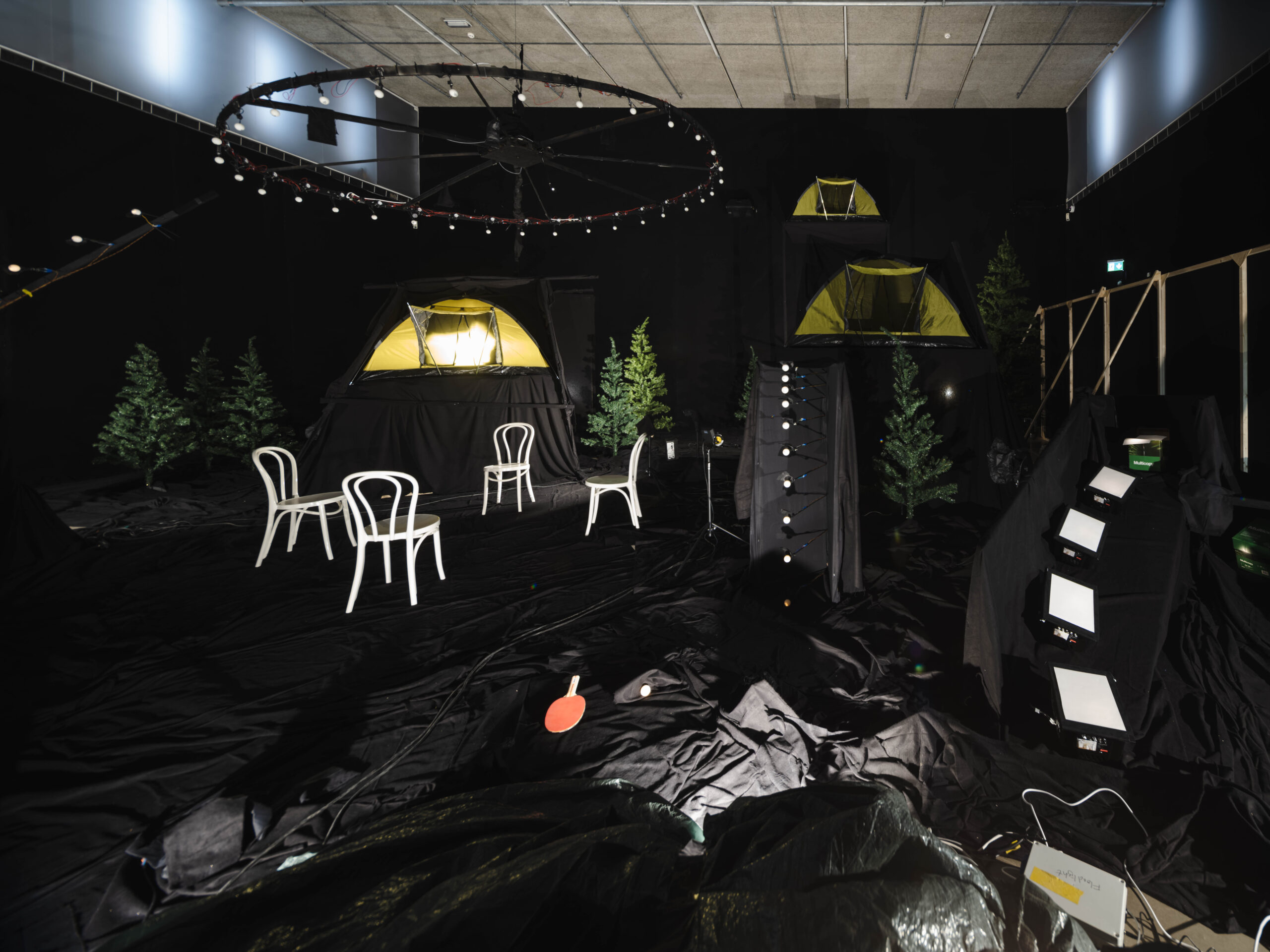Peter Geschwind had a great influence on the field of art. He allowed the boundaries between artist, producer and educator to be dynamic, and created new constellations and artistic collaborations depending on the situation. In his artistry, Geschwind explored a variety of materials and techniques. Often, he reused everyday objects which he redefined, and charged with new meanings. His, often low-tech, works have a D.I.Y. feel, playing with popular cultural references, in which humour as well as melancholy are palpable. Geschwind had a background in music – sound, rhythm, and pulse are constantly present as an additional dimension in his artistry.
Peter Geschwind / After Image
15 feb2 apr 2023
After Image presents Geschwind’s own unique technology for creating “reality animation”. In other words, using sound and light he created animations of real things in the physical space. The result is a dancing broom, popcorn appearing to pop, and a shaking earthquake going on in a room. Just like in the classic artistic trompe l’oeil technique, these animations are experienced as true, while you also understand that you are being deceived.
Giving a more precise account of what Peter Geschwind achieves in the exhibition is impossible. Because it is not possible to describe these works. Nor is it really possible to show an image – after all, they are animations. And video documentation simply makes them look like movies. Geschwind himself explained that “the project is a direct continuation of my previous works with installation and moving sculpture, but here my ambition is to try to slightly stretch the exhibition format by inventing a new medium.”
A newly invented medium must be experienced. There is no other option. Once you have done it, you understand.
And the experience is magnificent. It is extraordinary. And funny. It is magic, in a way. Imagine the people who were enchanted by the very first animated cartoons, such as the dancing brooms in the 1940 Disney film Fantasia. When they saw it, it must have been hard for them to believe it was true. In the new medium a new world of images became possible. Perhaps this is where Geschwind got his dancing brooms from, delighting and renewing just as then.
One of the many capacities of Peter Geschwind’s artistry, which is evident in this exhibition, is that you can talk just as much about classic artistic techniques as trompe l’oeil as about Disney of the popular culture. And the visitors can take what they want from here in terms of experience. Geschwind never backed down from the fact that what he did was, quite simply, awesome. That was enough, there was no need to elaborate further, unless you wanted to. But at the same time, he was interested in how it came about that the eye could be deceived like this. And what it meant, in extension, that reality could be manipulated in such a way. He was into how technological development affects the perception and view of the environment.
Without saying too much – in case you have not seen the exhibition – there are moments of “disclosure” in the art; occasions when the visitor is allowed to see everything that lies behind the animations. Like the revelation of the magician’s trick. These moments were particularly important for Geschwind. No one is actually intended to “be fooled” completely by what he created. If so, an essential effect would be lost – the effect of seeing the double play, revealed when the animations are contrasted with the cords of reality, wired criss-cross all over. The most skilled trompe l’oeil painters found the exact breaking point between the illusion and the viewers’ awareness that what they saw was an illusion. Instead of just seeing the image and be cheated, they were given the experience of being cheated. The difference is distinct. The experience was, in short, to see beyond the image, to see anew. The disclosures in After Image are part of this sphere. The visitor is faced with navigating between true and false, real and make-believe. In the image world of today, there are few discussions as important as the one about the true and false image. The manipulation is advanced and widespread. Its impact is significant. Geschwind knew this. And he knew how artists took it on as their subject. In his latest works, he developed this motif, with the extraordinary achievement of giving us a new medium.
During the work on the exhibition, Peter Geschwind passed away after a period of illness. With the help of people who were closest to him and his art, Bonniers Konsthall has realized the exhibition to the best of its ability. We hope that this will be an opportunity for an audience to meet the very latest from one of Sweden’s leading artists. The exhibition has been produced in the spirit and honour of Peter Geschwind, and we hope that the magical experience of his work will linger with audiences for a long time to come.
Biography
Peter Geschwind (1966–2021) lived and worked in Stockholm. He studied at the Konstfack University College of Arts, Crafts and Design and the Royal Institute of Art. Geschwind’s works have been shown at numerous museums and galleries, including the Modern Art Gallery, London; Tensta Konsthall; Art in General, New York; Moderna Museet, Stockholm; Färgfabriken, Stockholm; Borås Konsthall; the Royal Academy of Fine Arts, Stockholm; Gävle Konstcentrum; Liljevalchs, Stockholm; Kunsthalle Vierseithof, Germany and Centre Culturel Suédois, Paris.
In 2008–2018, Geschwind was a professor of fine art specialising in sculpture at the Royal Institute of Art, and he was also its deputy vice-chancellor in 2016–2017.
Image: Peter Geschwind, After Image, 2023. Photo: Jean-Baptiste Béranger.


